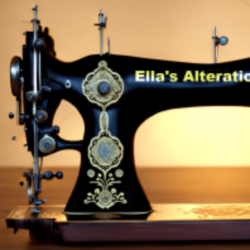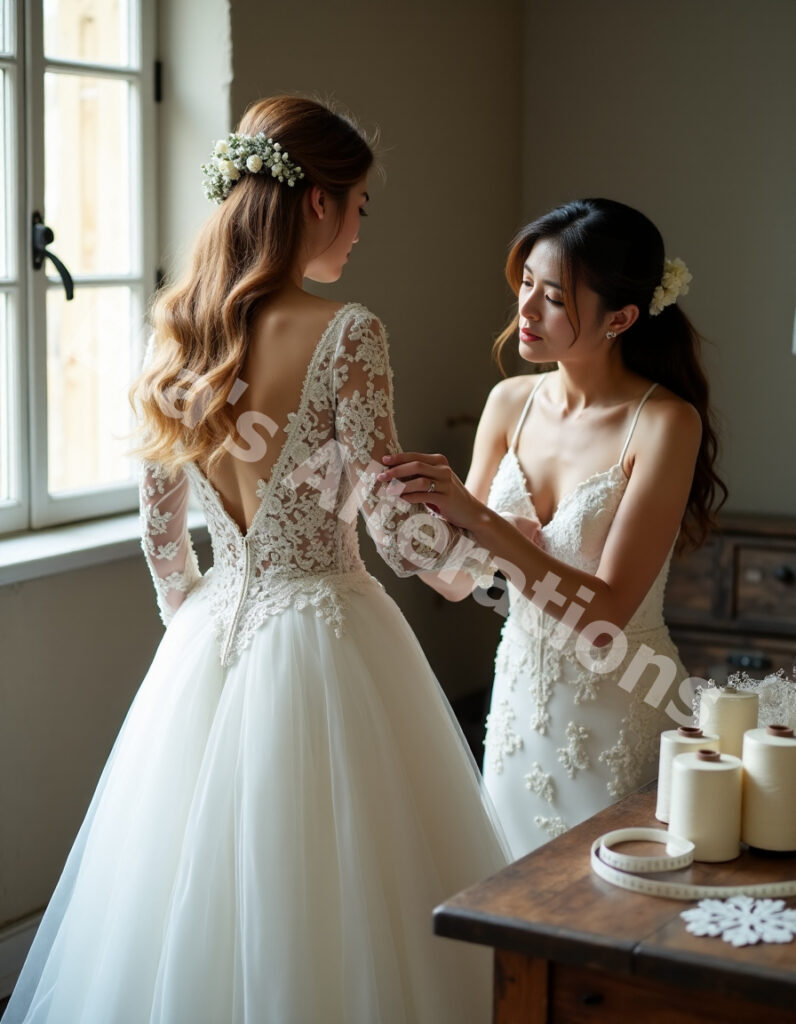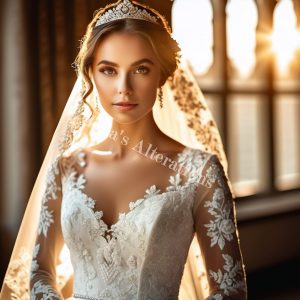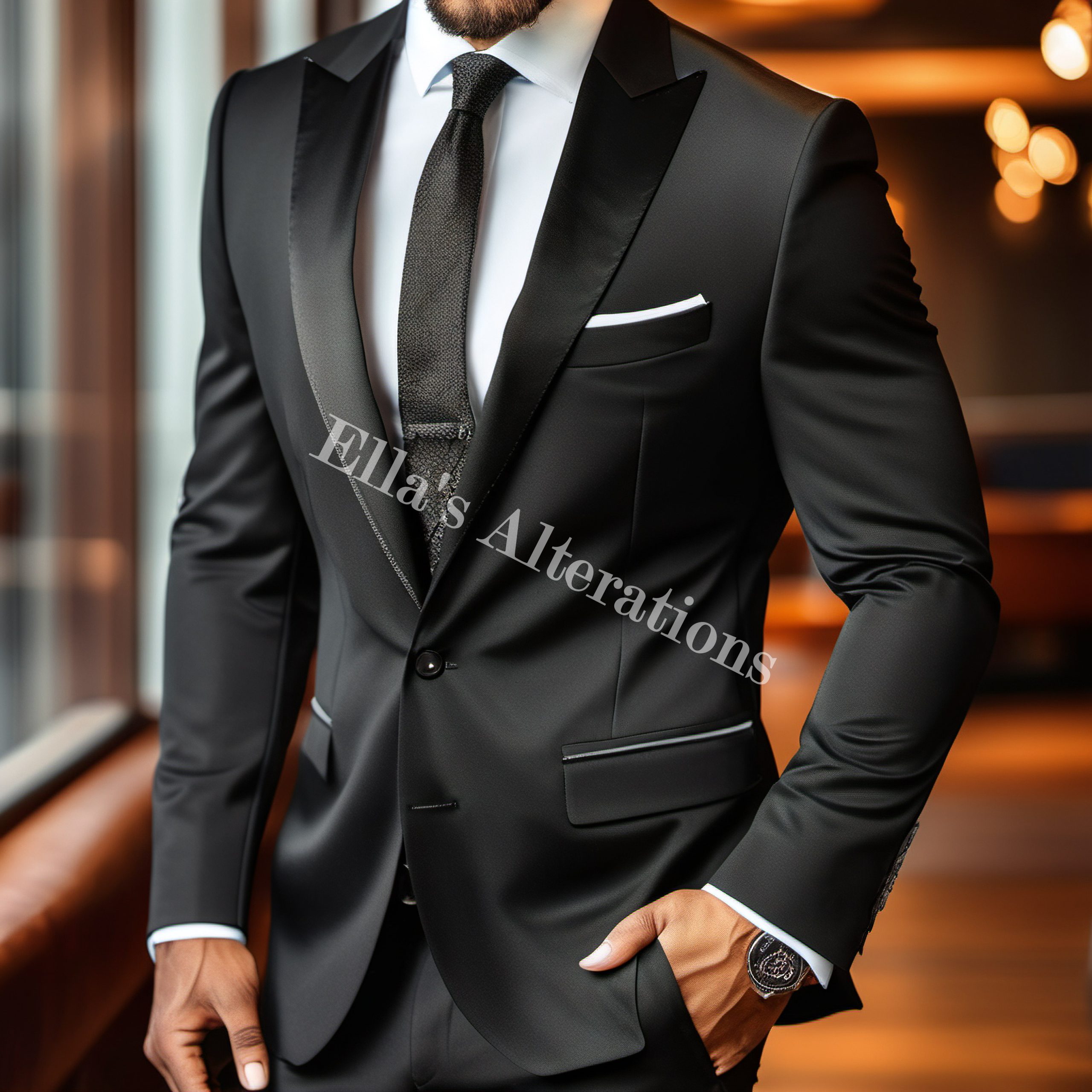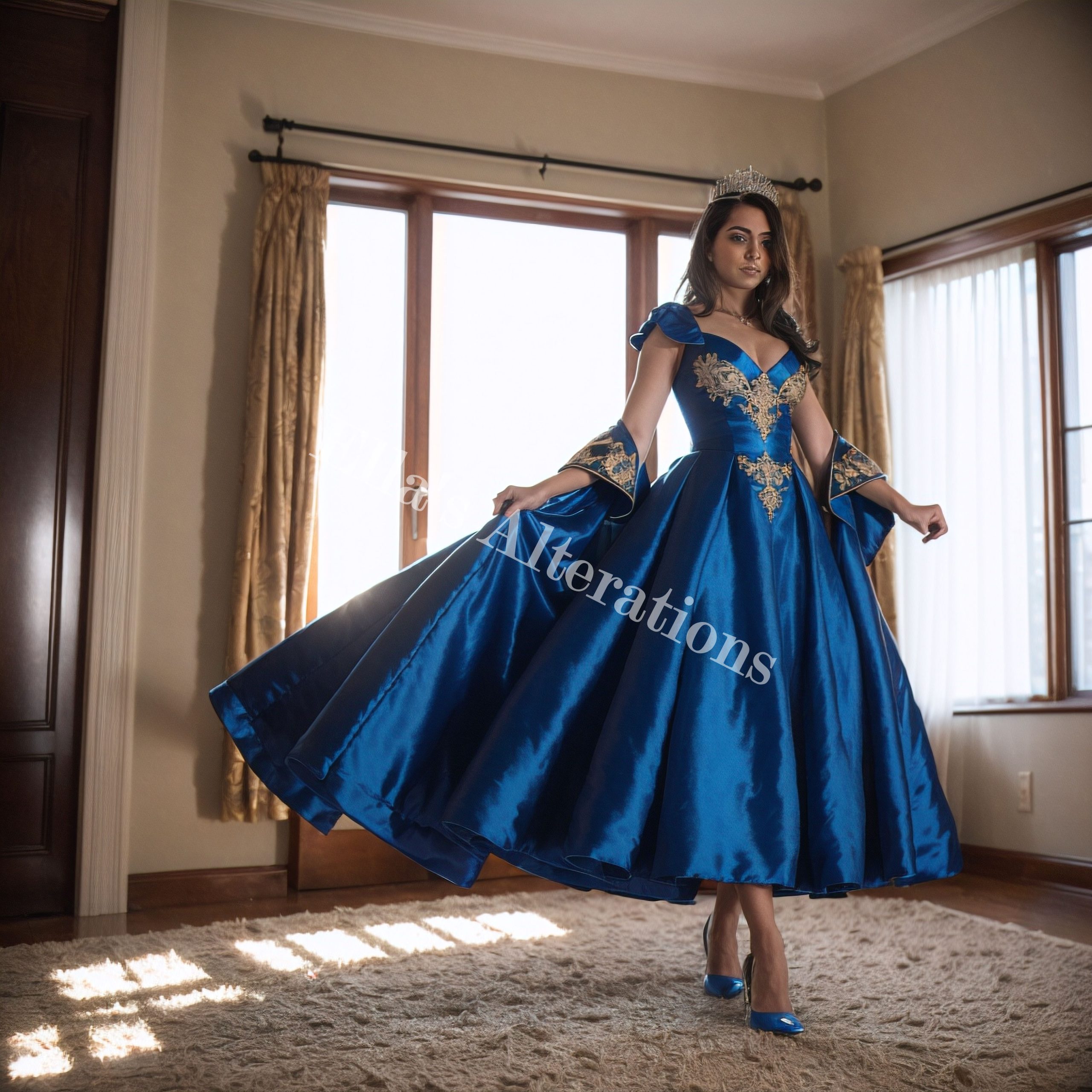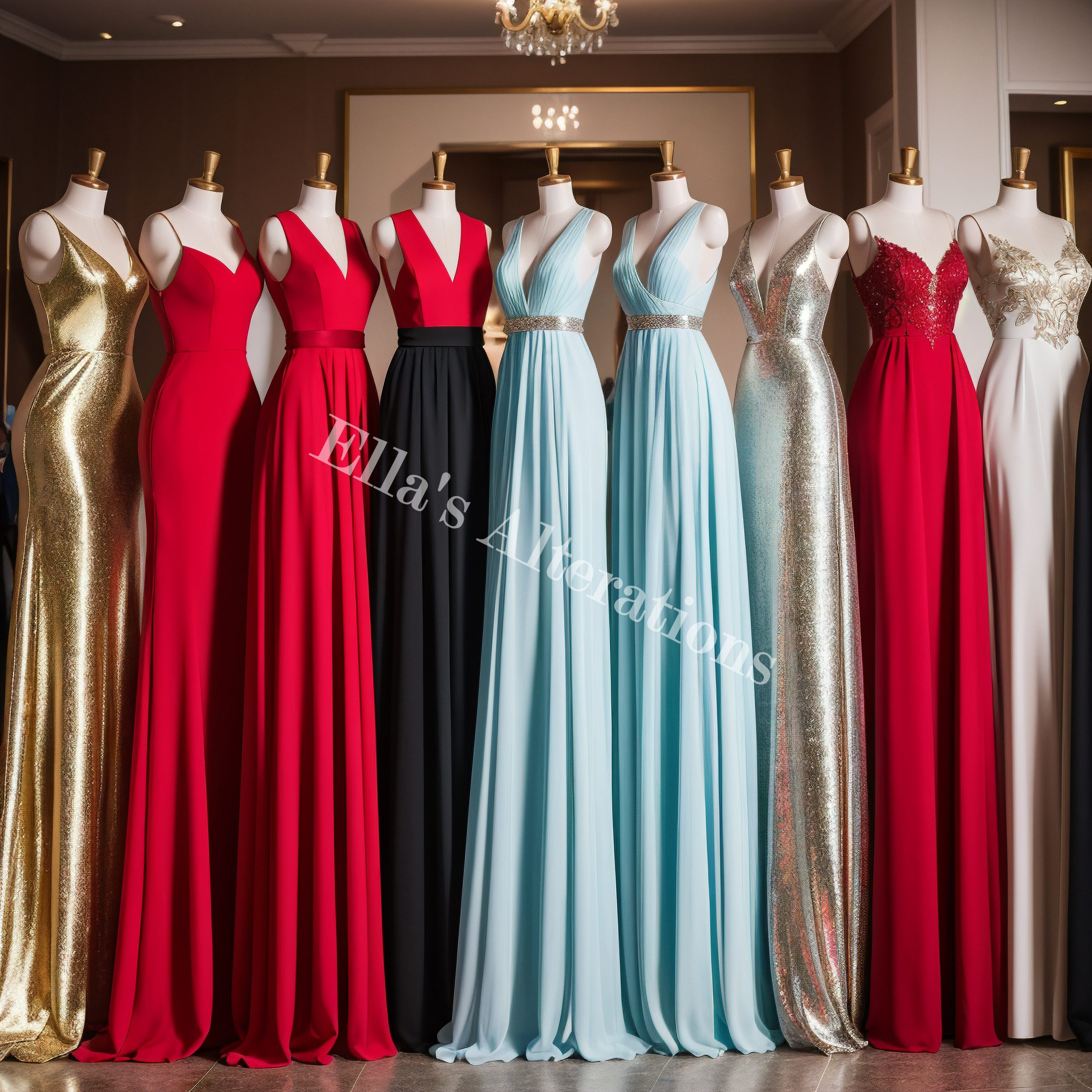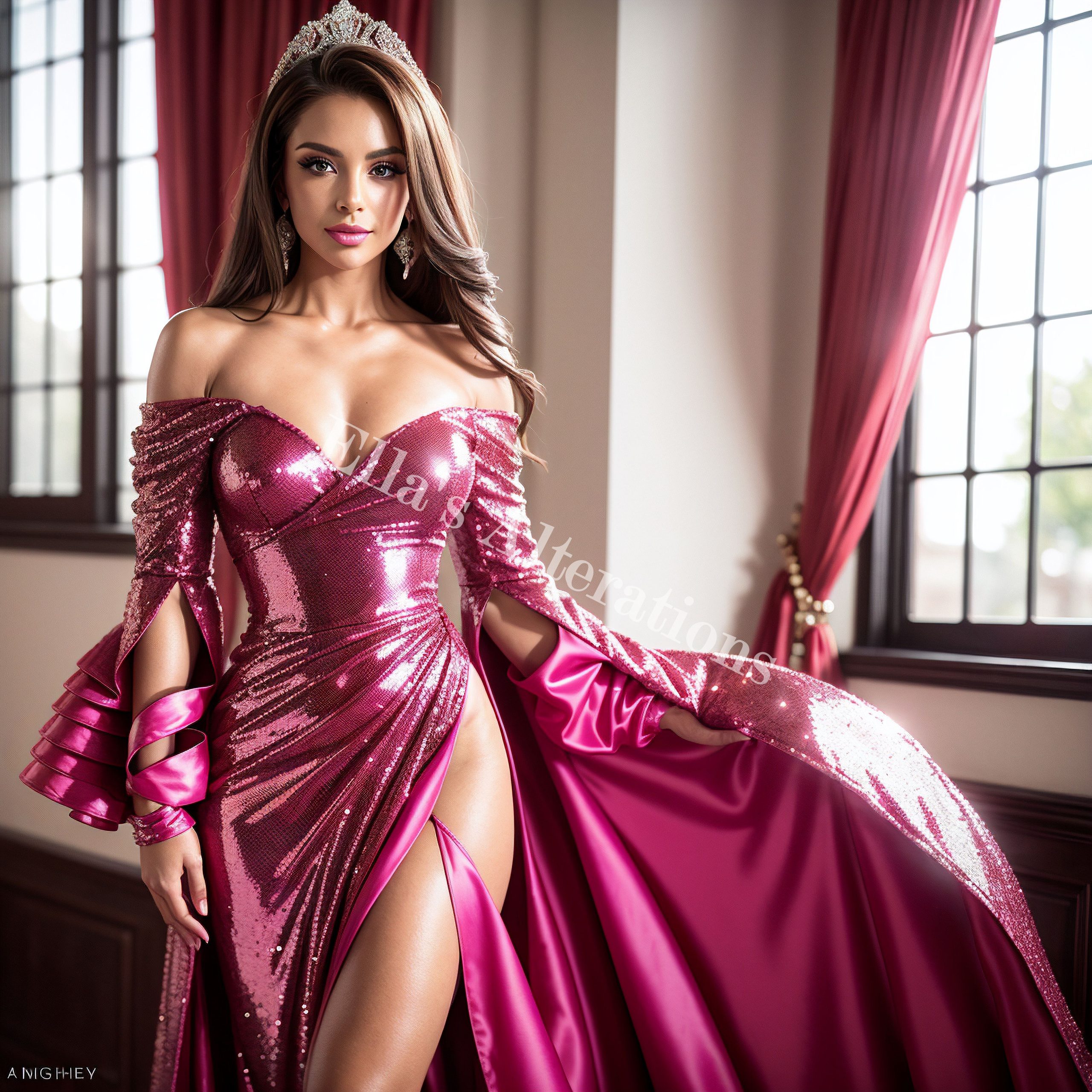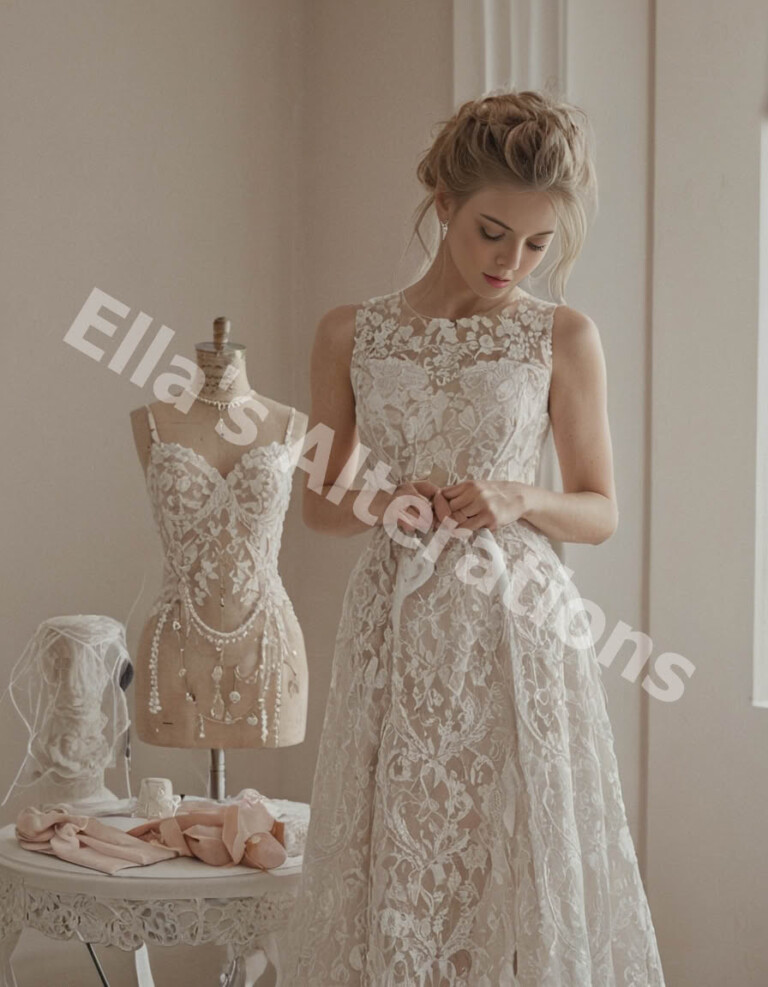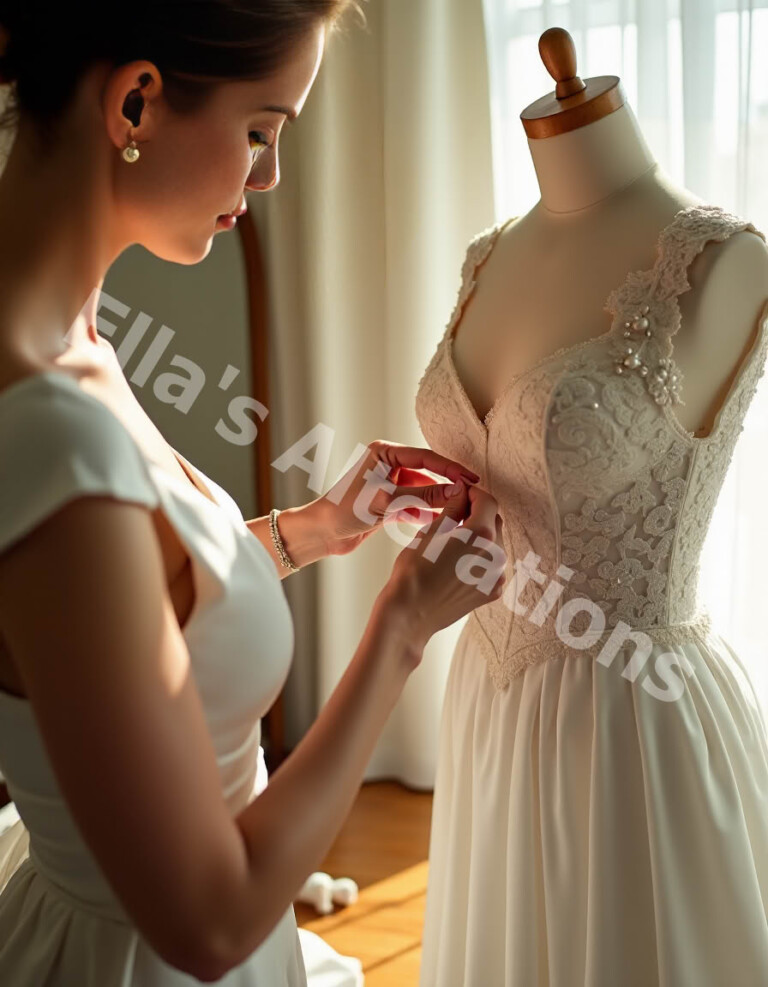Unveiled: The Unwritten Rules Of Wedding Attire & Perfect…
Introduction: A Dress Code Worth Decoding:
Weddings are filled with tradition, emotion, and meticulous planning—but nothing sparks more quiet panic than figuring out what to wear.
Whether you're walking down the aisle or simply attending, the expectations around wedding attire can feel like a high-stakes fashion riddle wrapped in tulle.
Unlike a typical party or formal event, weddings carry a mix of cultural customs, generational expectations, and unspoken style rules that can trip up even the most fashion-savvy among us.
Let’s start with the obvious, yet surprisingly misunderstood: the dress code.
Many couples include a line on their invitations—black tie, cocktail, beach formal—but those phrases often lead to more questions than answers.
Black tie might mean floor-length gowns and tuxedos to one person, while another reads it as “fancy, but comfy.”
And what about creative dress codes like “garden chic” or “festive formal”?
These hybrid styles are increasingly popular, especially for modern weddings, but they require a sharp eye for context.
The key? Consider the venue, season, and time of day.
A rooftop wedding at sunset in NYC demands a different kind of ensemble than a barefoot ceremony on a coastal bluff.
Color is another silent language of wedding etiquette.
Most people know that wearing white as a guest is a hard no, but the line blurs with off-whites, creams, or prints with white backgrounds.
Even bold red or flashy sequins can be controversial, depending on the vibe of the day and the cultural significance involved.
For example, red is celebratory in many Eastern cultures, but can be seen as attention-seeking in a traditional Western setting.
Black used to be a wedding faux pas, but now it’s considered sleek and sophisticated—especially for evening events.
The unspoken rule? Don’t wear anything that might compete with or distract from the couple, particularly the bride.
Subtle elegance always wins over statement-making drama.
Guests aren’t the only ones walking this fine fashion line.
Brides themselves face the challenge of choosing a dress that feels both personal and appropriate.
That could mean balancing their own vision with family traditions, religious customs, or venue-specific expectations.
For example, a cathedral ceremony may require modest sleeves or a longer hemline, whereas a mountaintop elopement might call for a lighter, more flexible design.
And then there’s the decision between staying timeless or embracing trends—should you channel Grace Kelly or go full modern minimalism à la Meghan Markle?
But even the perfect dress needs perfecting.
No matter how luxurious or high-end the gown, alterations are the secret to turning a beautiful dress into your dress.
It’s not just about hemming the bottom or tightening the bodice—it’s about tailoring the piece to flatter your shape, enhance comfort, and ensure it moves with you, not against you.
From creating a bustle for dancing at the reception to adjusting sleeves, necklines, or waistlines, these subtle tweaks make all the difference.
So, whether you’re the one getting married or just attending, navigating the world of wedding attire means blending style with respect, and fashion with function.
It’s not just about looking good—it’s about dressing with intention.
Understanding these unwritten rules lets you walk into any wedding confident, comfortable, and completely on point.

The Unwritten Rules of Wedding Guest Attire:
Navigating wedding guest attire can feel like decoding a silent social contract—one that’s rooted in respect, subtlety, and style awareness.
You’re invited to celebrate love, not to steal the spotlight, and how you dress communicates more than just your fashion taste.
In this section, we unpack the unwritten rules of wedding guest attire so you can show up confident, appropriate, and well-dressed, no matter the setting.
Let’s start with the golden rule: never wear white.
This one seems obvious, yet every wedding season brings a few guests who flirt too closely with ivory, cream, or blush tones that photograph dangerously similar to the bride’s gown.
Unless the invitation explicitly encourages an all-white theme, it’s best to steer clear.
Even if your outfit includes prints with a white base, make sure it doesn’t read as bridal from a distance or in photos.
Color etiquette doesn’t stop at white.
Flashy reds, deep blacks, or sequin-heavy ensembles can also raise eyebrows depending on the context.
Red, for instance, can draw attention in a way that competes with the couple, especially in more traditional or conservative weddings.
Black, though increasingly accepted, should be styled thoughtfully—pair it with romantic fabrics or colorful accessories to soften the look and avoid looking like you’re headed to a formal business dinner.
The venue also speaks volumes about how you should dress.
A black-tie ballroom affair calls for floor-length gowns and tuxedos, while a beach wedding leans more toward breezy fabrics and cocktail-length dresses.
Garden weddings welcome floral prints, while urban rooftop ceremonies may inspire a sleek, modern aesthetic.
Always take cues from the setting and the invitation’s design—lace borders and cursive fonts often hint at formality, while playful language and bold colors suggest a more relaxed dress code.
Dress codes on invitations can be cryptic, so here’s a quick breakdown:
Black Tie: Floor-length gown for women, tuxedo for men.
Formal or Black Tie Optional: Gown or dressy midi dress; men can wear a dark suit or tux.
Cocktail Attire: Knee-length or midi dresses, stylish jumpsuits; men in suits.
Semi-Formal: A bit more relaxed—think polished, not casual.
Casual: Still smart—sundresses, linen trousers, light colors.
Denim is a no-go.
Then there’s seasonal awareness.
Spring and summer weddings invite pastels, florals, and lighter fabrics, while fall and winter ceremonies welcome deeper hues and richer textures like velvet or satin.
Don’t forget to factor in the weather and venue terrain—outdoor weddings may mean navigating grass or gravel, so choose shoes wisely.
Modesty and cultural respect also play into what’s appropriate.
If you’re attending a religious ceremony—whether at a church, temple, or mosque—it’s thoughtful to cover shoulders, avoid low necklines, and bring a wrap or shawl.
When in doubt, dress more modestly for the ceremony and change into something more relaxed for the reception.
Finally, remember that the goal is to celebrate—not stand out.
Your outfit should enhance the overall energy of the day, not distract from it.
Choose something that fits the formality, aligns with the couple’s vision, and still feels like you.
Think refined, respectful, and well-edited.
When in doubt? Reach out.
It’s perfectly fine to ask the couple or bridal party for a little clarification.
It shows you care about honoring their day—and trust us, they’ll appreciate the effort.
In the world of weddings, a well-dressed guest isn’t the flashiest in the room—they’re the one who looks stylish, polished, and completely in tune with the celebration.
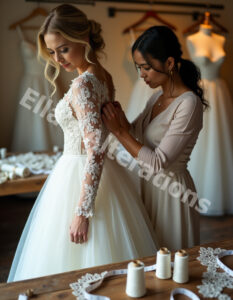
Second-Hand Chic: Embrace Sustainability with 80s Hand-Me-Down Wedding Dresse
What Every Bride Should Know About Wedding Attire Etiquette:
Choosing a wedding dress is one of the most exciting parts of planning a wedding—but with that excitement comes a surprising amount of pressure.
Beyond just selecting a style you love, you’re also stepping into the realm of wedding attire etiquette, where tradition, culture, venue, and family expectations quietly shape your options.
So how do you find that balance between staying true to your style and honoring the occasion?
This section dives into everything brides should know to navigate wedding dress etiquette with grace and confidence.
First things first: consider your venue and ceremony style.
Where you’re getting married can influence not just the design of your dress but also its appropriateness.
A cathedral or religious venue may call for more modesty—think covered shoulders, higher necklines, or longer sleeves—while a beach ceremony or casual outdoor wedding leaves room for relaxed silhouettes, lighter fabrics, and shorter hemlines.
Respecting the formality of your space shows an understanding of the setting while still leaving room for personal expression.
Then there’s the matter of cultural or family traditions.
In many families, there’s a strong connection to certain bridal styles or rituals, whether it’s wearing a family heirloom veil, choosing a traditional gown shape, or incorporating modesty elements.
Brides often find themselves at the intersection of honoring these customs while still wanting a dress that feels modern and “them.”
The key here is balance.
You can absolutely respect tradition while customizing elements—adding detachable sleeves to a strapless dress for the ceremony, for instance, or modifying a passed-down gown to reflect your personal taste.
Let’s talk about color—yes, even for brides, there are nuances.
While white remains the iconic choice, more brides are exploring shades like ivory, blush, champagne, and even soft pastels.
These alternatives can feel just as bridal while better complementing skin tones or standing out against certain backdrops.
That said, if you choose to wear something unconventional—say, a bold color or a patterned gown—be mindful of how it fits the overall tone of your wedding and whether it aligns with your guests’ expectations.
Surprise is good. Confusion, not so much.
Modesty versus modernity is another area where etiquette and personal taste intersect.
If your personal style leans toward plunging necklines, sheer panels, or daring cuts, consider how you’ll be photographed and how that might be perceived by different generations present.
You don’t need to censor yourself—but it’s worth considering how you can maintain elegance while still feeling sexy and confident.
This is where smart tailoring comes in.
With the right alterations, you can ensure your gown hugs in all the right places without compromising class.
A major part of wedding dress etiquette also lies in how the dress fits—and that’s where alterations come into play.
A perfectly tailored dress shows respect for the occasion and ensures you feel confident, comfortable, and picture-perfect throughout the day.
Slipping straps, gaping bodices, or hems that trip you up not only distract from your look but can also interrupt the flow of the celebration.
Schedule multiple fittings, communicate clearly with your seamstress, and allow time for changes—you’ll be grateful you did.
Lastly, remember that etiquette isn’t about restricting your choices—it’s about helping you shine in a way that’s respectful, intentional, and timeless.
A wedding gown should feel like the most authentic version of you—just elevated.
Whether you're drawn to lace long sleeves like Kate Middleton, a sleek silhouette inspired by Vera Wang, or a whimsical gown with floral appliqués, the best dress is the one that honors both your vision and the moment you’re stepping into.
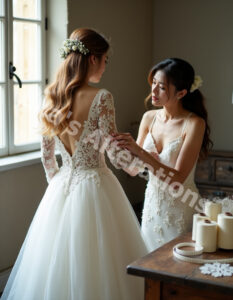
Alteration Secrets Every Bride (and Guest) Needs to Know:
The truth about wedding attire?
Even the most exquisite dress can fall flat without the right fit.
Whether you’re a bride preparing for the aisle or a guest aiming to look polished and put-together, alterations are your not-so-secret weapon.
They don’t just tweak hems and tighten seams—they transform how you move, feel, and carry yourself on one of the most memorable days of your life.
In this section, we uncover the essential alteration strategies every bride and guest should know for a flawless, confidence-boosting fit.
Let’s start with brides.
When you first slip into that dream gown—whether it's a Vera Wang masterpiece, a vintage lace number, or a modern sheath from your favorite boutique—it might feel “almost perfect.”
But almost isn’t enough.
Every body is unique, and wedding dresses are made with alteration in mind.
You’ll likely need adjustments to the bust, waist, hips, straps, or hemline, and that’s completely normal.
The golden rule? Start early.
Book your first fitting two to three months before the wedding date, allowing time for multiple rounds of alterations.
Most brides have at least two fittings—sometimes three or four depending on how intricate the gown is or how many changes are needed.
Your final fitting should happen no later than two to three weeks before the wedding, to ensure everything is secure and tailored to your current body.
Choose your Tailor or seamstress wisely.
Very few seamstresses, however most tailors are, they are trained in bridal wear, and wedding dresses are an entirely different beast—they’re often layered, heavily embellished, and made from delicate fabrics like silk, lace, or tulle.
Look for a specialist who understands how to handle beading, corsetry, or dramatic trains.
Ask to see their portfolio, check reviews, and don’t be afraid to ask questions about their experience with your specific dress style.
Now, what if you're working with a second-hand or vintage dress?
Altering a pre-loved gown can be magical—but also tricky.
Vintage fabrics may be fragile or discolored, and older silhouettes might need structural changes to feel modern.
Always consult with a skilled bridal tailor before committing to significant adjustments.
If preserving the original design is important to you, make that clear early on.
And yes—guests need alterations too!
Especially for formal weddings, your dress or suit deserves a custom fit.
A well-tailored outfit makes all the difference in how it looks and feels.
Whether it's nipping in a waist, shortening a hem, or adjusting sleeve length, minor changes can elevate your entire look.
This is particularly important for off-the-rack options, second-hand finds, or if you're re-wearing something that hasn't been tailored to your current body.
Body changes happen, and that’s okay.
If you’ve gained or lost weight, if you’re pregnant, or if your body simply fluctuates (hello, stress and travel), a great seamstress can work with you.
Keep them updated and ask for flexible options—corset backs, adjustable panels, or removable features can offer comfort without compromising the silhouette.
Finally, alterations go beyond function—they can be transformative.
Adding a bustle lets you dance without tripping over your train.
Shortening a sleeve reveals a family heirloom bracelet.
Adjusting the neckline gives you more confidence.
Every stitch, tuck, and adjustment is about more than fit—it’s about helping you fully embody your style and spirit on a day that matters.
The takeaway? Don’t settle for “good enough.”
Whether you’re the bride or a guest, thoughtful alterations elevate your attire from a pretty outfit to a perfectly polished statement.
It’s not just tailoring—it’s tailoring with intention.
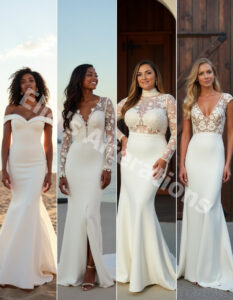
Get Ready for Wedding Season: Stunning Pastel Dresses in 2024!
Navigating Special Alteration Scenarios:
Not every wedding dress fits the traditional mold—and not every body, event, or gown calls for a one-size-fits-all alteration strategy.
Special scenarios require special solutions, and whether you're working with a vintage heirloom, planning a beach ceremony, or accommodating body changes, your alterations should be as unique as your story.
This section is all about navigating those outside-the-box situations with clarity, creativity, and confidence.
Let’s begin with one of the most common special cases: altering a wedding dress for a petite bride.
Petite doesn’t just mean “short”—it often involves adjusting proportions throughout the entire gown.
That could include raising the waistline, shortening straps, or reshaping sleeves so they don’t overwhelm a smaller frame.
Hemming the length is usually a given, but tailoring bodice proportions and volume is just as important to avoid the gown looking too heavy or “swallowing” the bride.
A good tailor or seamstress will know how to rebalance the design without compromising its elegance.
Next, there’s the often emotional task of altering a vintage or heirloom dress.
These gowns are filled with history—and often made with delicate fabrics that require gentle handling.
The goal is to preserve the soul of the dress while making it wearable, modern, and flattering.
Alterations might include updating the lining, restructuring the bodice, or adding modern elements like illusion sleeves or a more fitted waist.
If sentimental value is high, some brides opt to incorporate elements of the original dress—like lace trim or buttons—into a new, custom design that blends old and new beautifully.
Brides going through body changes—whether due to pregnancy, weight loss, or simply natural fluctuations—often need flexible alteration plans.
The key here is adaptability.
If you're expecting, a talented seamstress can design with future growth in mind, using stretchy panels, empire waistlines, or adjustable corset backs.
For those navigating weight changes, fittings closer to the wedding date can accommodate shifting sizes, but early communication with your tailor is essential.
The more information they have, the more they can build adjustability into your gown.
Then there’s altering dresses with tricky embellishments—think sequins, beading, lace, or intricate embroidery.
These materials can’t be taken in or let out like standard fabric.
The process involves removing, reapplying, or in some cases, redesigning elements to maintain symmetry and flow.
If you're customizing a dress with heavy detailing, be prepared for longer turnaround times and higher costs.
It’s meticulous work, but when done right, the results are seamless.
Destination weddings, like beach ceremonies or mountaintop elopements, bring their own set of considerations.
Lightweight fabrics, breathable linings, and mobility become priorities.
Alterations might involve removing extra layers, shortening trains, or ensuring the fit is secure enough for wind, sand, or uneven terrain.
Don’t forget to factor in travel—ask your tailor how to pack your gown or whether it can be altered to fold easily without wrinkling.
For brides re-wearing or restyling a second-hand or pre-worn gown, alterations often begin with a reset—replacing zippers, adjusting stretched seams, or customizing the fit to your frame.
If the gown has already been altered for someone else, your seamstress may need to undo or work around those changes to achieve a new custom fit.
Ultimately, the secret to handling special alteration scenarios is open communication and a willingness to collaborate with your seamstress.
Be honest about your needs, timeline, and expectations.
Special cases may require more fittings, more time, or more creativity—but they also result in dresses that are deeply personal, story-rich, and one-of-a-kind.
No matter your circumstance, the right strategy will make your dress feel like it was designed just for you.
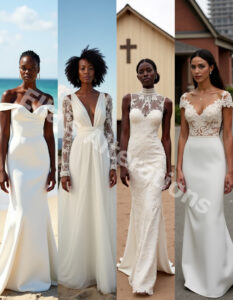
Beyond the Big Day: Preserving and Repurposing Your Dress:
The moment your wedding day ends, your dress carries more than fabric and thread—it holds memories, emotion, and significance that deserve thoughtful care.
Whether you dream of passing it down, repurposing it, or simply keeping it as a keepsake, what happens to your gown after the celebration matters just as much as what you do before it.
This section explores everything brides should know about preserving and repurposing their wedding dress, so it can continue to tell your story long after the last dance.
First up: preservation.
After hours of photos, dancing, and possibly an outdoor ceremony, your gown has likely encountered everything from makeup and sweat to grass stains and champagne spills.
Leaving these untreated can lead to discoloration or permanent fabric damage over time.
That’s why professional wedding dress cleaning—ideally within days or weeks of the wedding—is key.
Look for a cleaner who specializes in bridal fabrics and delicate details like lace, beading, or silk.
Be cautious of using generic dry cleaners, as they may not have the expertise or proper solvents to treat specialty gowns safely.
Once the dress is cleaned, the next step is proper storage.
This doesn’t mean zipping it back into a garment bag and shoving it to the back of a closet.
Professional preservation includes packing the dress in acid-free tissue, storing it in a specially designed archival box, and often sealing the package to prevent oxidation.
This ensures the dress maintains its color, structure, and detailing for decades.
Some preservation services even offer a clear viewing window, so you can admire your gown without exposing it to air or dust.
If you’re sentimental but practical, you might be wondering—can this dress serve another purpose?
Absolutely.
Repurposing your wedding dress opens a world of creative possibilities.
For starters, many brides opt to transform their gown into a new, wearable piece: a cocktail dress, anniversary outfit, or even a christening gown for a future child.
Skilled tailors can work wonders in reshaping and resizing sections of your dress into modern silhouettes while preserving important elements like lace sleeves, decorative buttons, or beaded bodices.
For those less inclined to wear it again, consider incorporating the dress into keepsakes.
Fabric swatches can be made into handkerchiefs, ring pillows, or quilt squares—ideal for framing or gifting.
Some brides use a piece of their dress to line a wedding photo album, wrap their bouquet stem, or create a clutch purse for special occasions.
And of course, donating or selling your gown can extend its story in a whole new way.
Passing it on to another bride through a second-hand boutique or a charitable organization not only gives the dress a second life but also helps make beautiful gowns accessible to those working within a budget.
If you choose this path, make sure the dress is professionally cleaned and disclose any previous alterations or marks.
In recent years, bridal sustainability has taken center stage, with more brides choosing second-hand gowns or designing custom dresses from vintage materials.
Preserving or repurposing your own dress contributes to this movement, making your wedding not only memorable but mindful.
At the end of the day, your wedding dress is more than a garment—it’s a piece of your personal history.
Whether it ends up in a preservation box, a new wardrobe staple, or someone else’s love story, giving it life beyond the big day honors the beauty of the moment and the memories it holds.
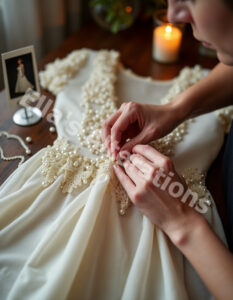
Conclusion: Dress With Intention, Alter With Confidence:
By the end of your wedding style journey—whether you’re the one wearing white or showing up as a supportive guest—one thing becomes clear: dressing for a wedding isn’t just about fashion.
It’s about thoughtfulness, intention, and respect for the moment.
From decoding invitation dress codes to selecting the perfect fabric and silhouette, every decision contributes to how you show up—not just in appearance, but in presence.
Weddings are unique spaces where tradition and personal style intersect.
That’s why dressing with intention is so important.
For brides, it means choosing a gown that not only reflects your personality but also complements the venue, respects cultural or family values, and aligns with the tone of the celebration.
For guests, it’s about understanding how your outfit fits into the day’s narrative—one where you're celebrating love, not making a statement at someone else’s expense.
Throughout this guide, we've explored how small details make a big impact: the shade of your dress, the way it fits, how it's altered to match your body and your movement.
These choices go beyond aesthetics—they affect comfort, confidence, and even the way you carry yourself throughout the day.
A beautifully tailored dress helps you move with ease, breathe deeply, and focus on what truly matters: the people, the memories, the experience.
For brides, embracing alterations is not a sign of an imperfect dress—it’s a step toward making that gown completely your own.
Alterations are where the magic happens.
A good seamstress can take a beautiful piece and make it flawless, transforming not just the fit, but your entire experience wearing it.
From bust adjustments to hemlines and custom design tweaks, it’s all about tailoring your gown to your shape, your style, and your vision.
Guests benefit from this same mindset.
Whether it's hemming your dress for better movement or tailoring a suit for sharp lines and a clean silhouette, these small upgrades elevate your look and help you show up as the best version of yourself.
Especially when dress codes are involved, taking the time to adjust your outfit shows consideration for the couple and the significance of their day.
Then there's the idea of honoring the dress even after the music fades.
Preserving it, repurposing it, or passing it along are all ways to give the garment continued meaning.
Whether it becomes a family heirloom, a cherished keepsake, or a gift to another bride, its value doesn't end at “I do.”
Ultimately, dressing well for a wedding is about more than looking good—it’s about feeling present, polished, and intentional.
When you dress with respect for the event and confidence in your own style, it shows.
It shows in how you carry yourself, how you move through the crowd, how you celebrate with authenticity and joy.
So whether you're walking down the aisle or taking your seat in the second row, let your attire reflect more than your taste—let it reflect your thoughtfulness, your awareness, and your place in the story.
With intentional dressing and confident alterations, you won’t just fit in—you’ll belong exactly where you are.
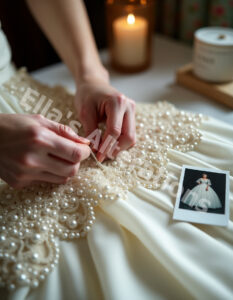
The Importance of Alterations for a Second-Hand Wedding Dress: A Guide to Making It Perfectly Yours
FAQs:
Is it okay to buy a second-hand wedding dress?
Absolutely—buying a second-hand wedding dress is not only okay, it’s becoming an increasingly popular and smart choice among modern brides.
In fact, shopping second-hand offers a number of benefits that go beyond saving money (though yes, the price difference can be significant).
It’s also a sustainable, sentimental, and surprisingly stylish option.
Let’s talk about value first.
Second-hand wedding dresses can cost 30% to 70% less than their brand-new counterparts, even if they were worn only once or not at all.
This means you could score a designer piece—think Vera Wang, Pronovias, or BHLDN—that may have been out of reach at full price.
For budget-conscious brides or those prioritizing other wedding expenses, this can be a game-changer.
There’s also a certain charm in giving a dress a second life.
Some brides feel good knowing their gown has already been part of a love story and now gets to be part of theirs.
Plus, vintage styles or discontinued designs are often only available second-hand, giving you a chance to wear something truly unique.
Of course, you’ll want to shop smart.
Check for reputable resale platforms, ask about past alterations, and request detailed photos before buying.
Once you have the dress, factor in tailoring costs—you’ll likely need some adjustments to make it fit just right, especially if the dress was altered for someone else.
If possible, schedule a professional cleaning before your first fitting, and always inspect the fabric and seams for wear.
With a little care and planning, second-hand doesn’t have to feel second-best—in fact, it might be the most meaningful and eco-conscious choice you make during your wedding planning journey.
It's a beautiful way to stay stylish, sustainable, and true to your story.
How far in advance should I plan for wedding dress alterations?
When it comes to your wedding dress, timing isn’t just helpful—it’s everything.
No matter how dreamy your gown is off the rack, chances are it will need some tailoring to fit you like a glove.
From minor tweaks to major adjustments, wedding dress alterations take time, skill, and multiple fittings to get just right.
So, how far in advance should you plan? Ideally, you should begin the alteration process at least two to three months before your wedding day.
Here’s why: bridal alterations usually involve more than a quick hem or a simple tuck.
Whether it’s adjusting the bust, taking in the waist, adding sleeves, or creating a bustle, these details require precision and, often, several appointments.
Your first fitting is typically where the seamstress evaluates your dress on your body and pins it for the initial round of changes.
A second fitting ensures those adjustments were made properly, while a final fitting—usually two to three weeks before the wedding—fine-tunes everything and checks the overall fit one last time.
If you're working with a complex design, a heavily beaded gown, or a custom-made piece, starting even earlier—three to four months out—is ideal.
And if your body is expected to change (like during pregnancy or a fitness transformation), share that with your tailor early so they can build in flexibility.
Also, factor in busy seasons.
Bridal salons and tailors book up quickly in spring and early summer, so schedule your fittings as soon as you have your gown.
Planning ahead ensures less stress, smoother fittings, and a final result that makes you feel confident and beautiful.
After all, the perfect dress isn’t just found—it’s fitted to perfection.
How can I alter a wedding dress without losing its original design?
Altering a wedding dress is a delicate dance between customization and preservation.
For many brides, the gown’s original design is what made them fall in love with it in the first place—so it’s natural to worry that changes could compromise its charm.
The good news? With the right approach and a skilled tailor, you can achieve a flawless fit without losing the essence of your dress.
The first step is knowing what to change—and what to protect.
Start by identifying exactly what needs adjusting for comfort and fit: perhaps it’s a slightly loose bodice, too-long sleeves, or a train that needs bustling.
These functional tweaks can be done subtly, especially if your seamstress is experienced with bridal gowns.
Always communicate your vision clearly.
Bring photos of how the dress looked when you first fell in love with it, and point out which elements must stay intact—like lace appliqués, beading, silhouette, or neckline shape.
Express what matters most to you, whether it's the flow of the skirt, the sleeve length, or the way the gown hugs your waist.
When working with embellishments or delicate fabrics, opt for internal tailoring techniques—like taking in seams from the lining rather than the outer layer—to preserve surface details.
If lace or beadwork needs to be removed during alteration, a professional tailor can often reapply it by hand, maintaining the dress’s original aesthetic.
Finally, start early and allow time for multiple fittings.
This gives your tailor the space to make careful, measured adjustments without rushing.
By prioritizing fit without sacrificing features, you can walk down the aisle in a gown that feels custom-made, while still capturing every detail you originally fell in love with.
What’s the average price range for wedding dress alterations?
Wedding dress alterations can be one of the most overlooked costs in bridal planning, but they’re absolutely essential to achieving that perfect, personalized fit.
While the final price will depend on the complexity of the alterations and the design of your gown, most brides can expect to pay anywhere from $150 to $700 for standard adjustments.
For more intricate work, costs can easily exceed $1,000—especially for couture or highly embellished gowns.
Basic alterations like hemming the skirt, taking in the sides, or adjusting the straps usually fall in the lower range of the spectrum.
If your dress has multiple layers, lace, beading, or a long train, expect those numbers to climb.
Custom additions—like adding sleeves, altering the neckline, or restructuring the bodice—require more labor and craftsmanship, which naturally increases the price.
Another cost that often surprises brides is the bustle.
This small but vital alteration (which allows you to pin up the train for dancing and movement) can range from $40 to $150 depending on how many points are needed and the gown’s construction.
Where you live also plays a role.
In major cities like New York or Los Angeles, you might pay more due to higher demand and labor costs.
Conversely, smaller towns or independent seamstresses may offer more budget-friendly rates.
To avoid surprises, always ask for a quote up front during your first fitting and get a breakdown of what’s included.
Some bridal salons offer packages for alterations, while others charge à la carte.
Budgeting $300 to $500 as a general guideline gives you room to make essential changes without cutting corners.
Remember, the right fit transforms your gown.
It’s not just an added cost—it’s an investment in how you feel walking down the aisle.
Is it okay to buy a second-hand wedding dress?
Absolutely—buying a second-hand wedding dress is not only okay, it’s becoming an increasingly popular and smart choice among modern brides.
In fact, shopping second-hand offers a number of benefits that go beyond saving money (though yes, the price difference can be significant).
It’s also a sustainable, sentimental, and surprisingly stylish option.
Let’s talk about value first.
Second-hand wedding dresses can cost 30% to 70% less than their brand-new counterparts, even if they were worn only once or not at all.
This means you could score a designer piece—think Vera Wang, Pronovias, or BHLDN—that may have been out of reach at full price.
For budget-conscious brides or those prioritizing other wedding expenses, this can be a game-changer.
There’s also a certain charm in giving a dress a second life.
Some brides feel good knowing their gown has already been part of a love story and now gets to be part of theirs.
Plus, vintage styles or discontinued designs are often only available second-hand, giving you a chance to wear something truly unique.
Of course, you’ll want to shop smart.
Check for reputable resale platforms, ask about past alterations, and request detailed photos before buying.
Once you have the dress, factor in tailoring costs—you’ll likely need some adjustments to make it fit just right, especially if the dress was altered for someone else.
If possible, schedule a professional cleaning before your first fitting, and always inspect the fabric and seams for wear.
With a little care and planning, second-hand doesn’t have to feel second-best—in fact, it might be the most meaningful and eco-conscious choice you make during your wedding planning journey.
It's a beautiful way to stay stylish, sustainable, and true to your story.
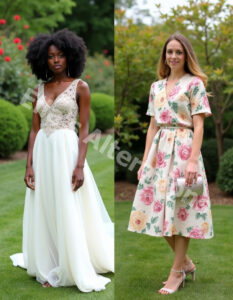
Get Ready for Wedding Season: Stunning Pastel Dresses in 2024!
About Us
|
Locations: 28.23362,
-82.181195, 25 Miles |
Address: 6986 Fort King Road, Zephyrhills FL 33541
Get Directions |
Book Your Fitting
Why Clients Trust Ella’s Alterations
Phone: +1 813-445-8894
Email: admin@ellasalterations.com
Hours:
